When it comes to building a patio, choosing the right base material is crucial to ensure the longevity and stability of the structure. One of the most popular options for patio bases is gravel due to its affordability, versatility, and durability.
However, not all gravels are created equal, and selecting the wrong type can lead to problems like poor drainage, uneven settling, and erosion.
In this article, we will discuss the different types of gravel to use for patio bases, the importance of proper drainage, and the installation process to help you make an informed decision.
Gravel is an excellent choice for patio bases because it allows water to pass through it easily, preventing pooling and runoff. However, choosing the right type of gravel is crucial to ensure that it performs as intended.
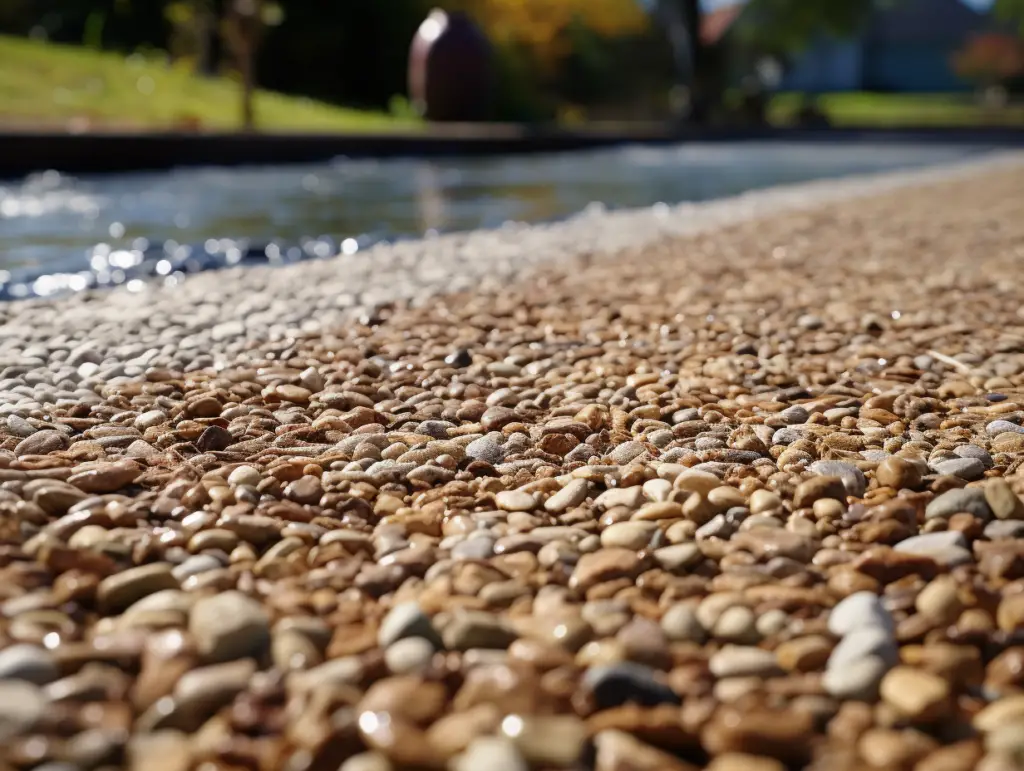
Key Takeaways
- Choosing the right type of gravel is crucial for a stable and long-lasting patio base.
- Proper drainage is essential to prevent erosion and other problems.
- The installation process for a gravel patio base involves excavation, compaction, and the addition of a layer of gravel.
Understanding Patio Bases
A patio base is the foundation and support system for your patio. The type of base you choose will impact the longevity and stability of your patio. It is important to choose the right type of gravel for your patio base to prevent shifting, cracking, or washing away.
When it comes to patio bases, there are two main types: permeable and non-permeable. Permeable bases allow water to pass through, while non-permeable bases do not. Permeable bases are generally preferred because they prevent water from pooling on the surface of the patio, which can cause damage over time.
The most commonly used material for a patio base is gravel. However, not all gravel is created equal. The size and shape of the gravel can impact its effectiveness as a base material. The best type of gravel for a patio base is 3/4-inch crushed stone. This size of gravel is durable and long-lasting, providing a stable base for your patio.
Another important factor to consider when choosing gravel for your patio base is its ability to compact. Compaction is the process of compressing the gravel to create a solid base. Compacted gravel provides a stable foundation for your patio and prevents it from shifting or settling over time.
In summary, choosing the right type of gravel for your patio base is essential for the longevity and stability of your patio. A permeable base made of 3/4-inch crushed stone that is compacted properly is the best option for a durable and long-lasting patio foundation.
Types of Gravel for Patio Base
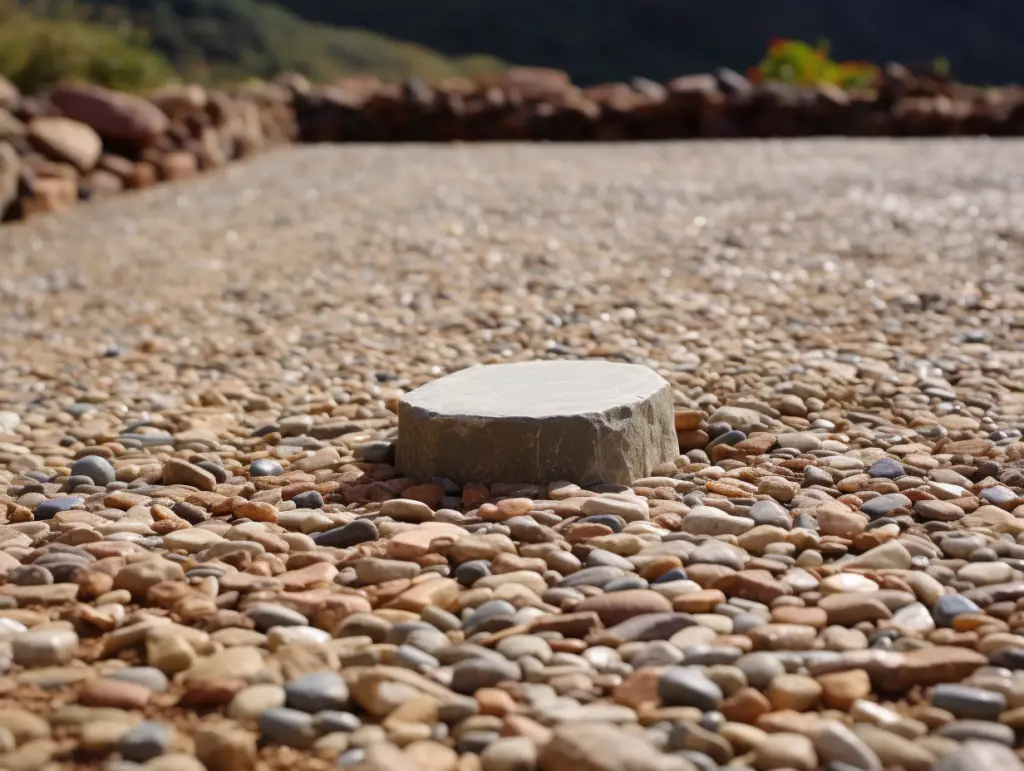
When it comes to selecting the right type of gravel for your patio base, there are several options available. Each type of gravel has its own unique features and benefits. In this section, we’ll discuss three popular types of gravel for patio base: pea gravel, crushed stone, and limestone.
Pea Gravel
Pea gravel is a popular choice for patio base because of its smooth, rounded texture. This type of gravel is made up of small, pea-sized stones that are easy to work with and compact well. Pea gravel is also affordable and comes in a range of colors, from beige to gray to brown.
One thing to keep in mind when using pea gravel for patio base is that it can shift over time due to its rounded shape. To prevent this, it’s important to install a border or edging to keep the gravel in place.
Crushed Stone
Crushed stone is another excellent option for patio base. This type of gravel is made up of angular pieces of stone that lock together when compacted. Crushed stone provides a stable base for your patio and is less likely to shift or move over time.
One advantage of crushed stone is that it comes in a range of sizes, from 3/8 inch to 4 inches. This allows you to choose the size that best fits your project. Crushed stone is also available in a range of colors, from white to gray to black.
Limestone
Limestone is a popular choice for patio base because of its durability and strength. This type of gravel is made up of calcium carbonate, which gives it a natural white or gray color. Limestone is also available in a range of sizes, from small pea-sized stones to larger pieces.
One thing to keep in mind when using limestone for patio base is that it can be more expensive than other types of gravel. However, its durability and strength make it a good long-term investment for your patio.
Overall, the type of gravel you choose for your patio base will depend on your specific needs and preferences. Whether you choose pea gravel, crushed stone, or limestone, make sure to select a type of gravel that will provide a stable and durable base for your patio.
Importance of Drainage
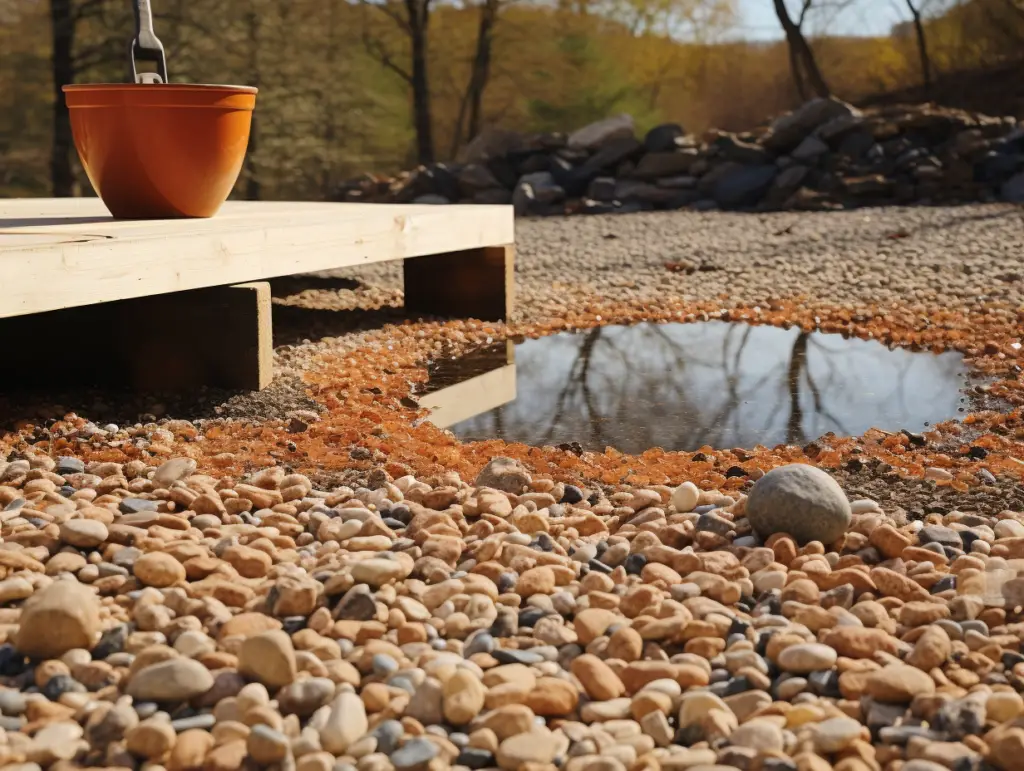
When it comes to patio bases, proper drainage is crucial. Without adequate drainage, rainwater can accumulate and cause erosion, leading to a muddy and unstable patio. To avoid such issues, it is important to choose the right type of gravel for your patio base.
Permeable gravel is the best option for patio bases as it allows water to pass through to the ground below. This helps to prevent water from collecting on the surface and causing erosion. Additionally, permeable gravel helps to prevent heaving which can occur when water freezes and expands.
Using a compacted base of permeable gravel also helps to prevent mud from forming on the surface of the patio. This is because the gravel provides a stable base that allows water to drain away, preventing it from pooling on the surface. This is especially important in areas with heavy rainfall or where the ground is prone to becoming saturated.
In summary, proper drainage is essential for a stable and long-lasting patio base. By choosing the right type of permeable gravel and ensuring that it is properly compacted, you can prevent issues such as erosion, heaving, and mud from forming on the surface of your patio.
Installation Process
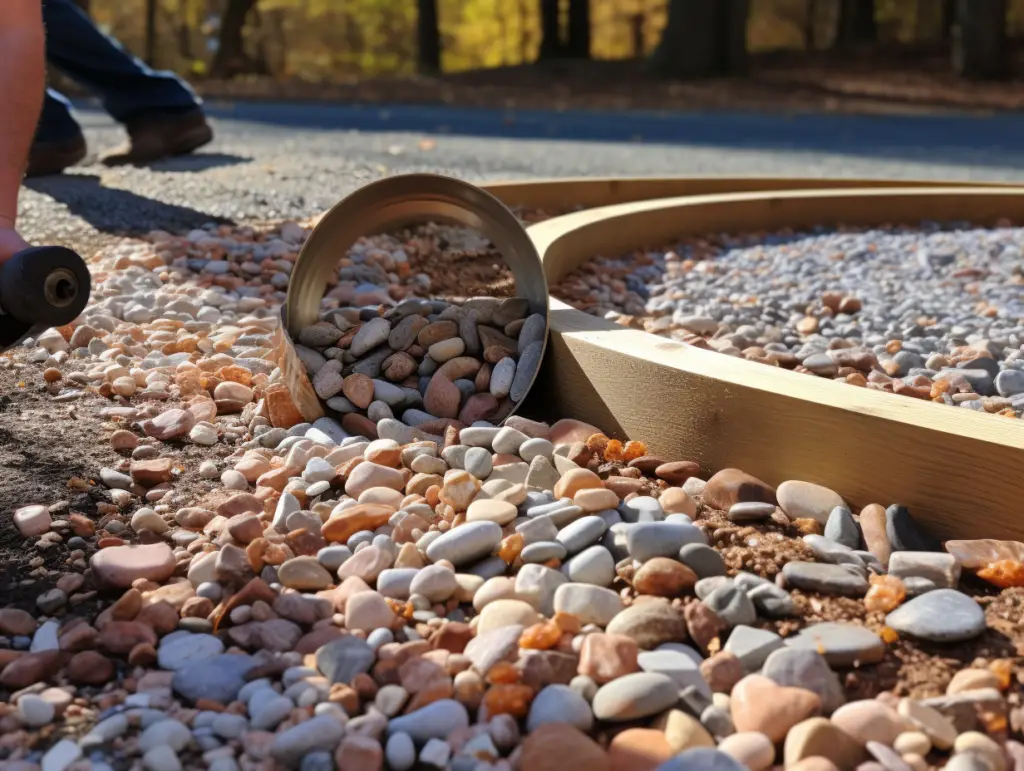
When it comes to installing a patio base, there are a few key steps you need to follow to ensure a stable and durable foundation. These steps include preparation, laying the base, and compaction.
Preparation
Before you start laying your gravel base, you need to prepare the area. This involves removing any existing materials, such as grass or old concrete, and ensuring the ground is level. It’s also a good idea to mark out the area where you want your patio to be using stakes and string.
Once the area is prepared, you may want to consider using a landscape fabric or weed barrier to prevent weeds from growing up through your patio. This is optional, but it can save you time and effort in the long run.
Laying the Base
The next step is to lay your gravel base. The type of gravel you use is important, as it needs to be durable and long-lasting. 3/4-inch crushed stone is a good option, as it will prevent the patio base from shifting, cracking, or washing away.
To ensure a level base, you should lay your gravel in layers, with each layer being no more than 4 inches thick. Once you have laid your first layer, use a plate compactor to compact it down. Repeat this process for each subsequent layer until you have reached the desired height for your patio base.
Compaction
The final step is to compact your gravel base. This is crucial for ensuring a stable and durable foundation for your patio. You can use a plate compactor for this, which is a machine that uses vibration to compact the gravel down. Make sure to go over the entire area multiple times, ensuring that the gravel is evenly compacted.
Once you have finished compacting your gravel base, you can move on to laying your patio pavers or stones. With a properly installed and compacted base, your patio will be stable and long-lasting.
Considerations for Surface Material
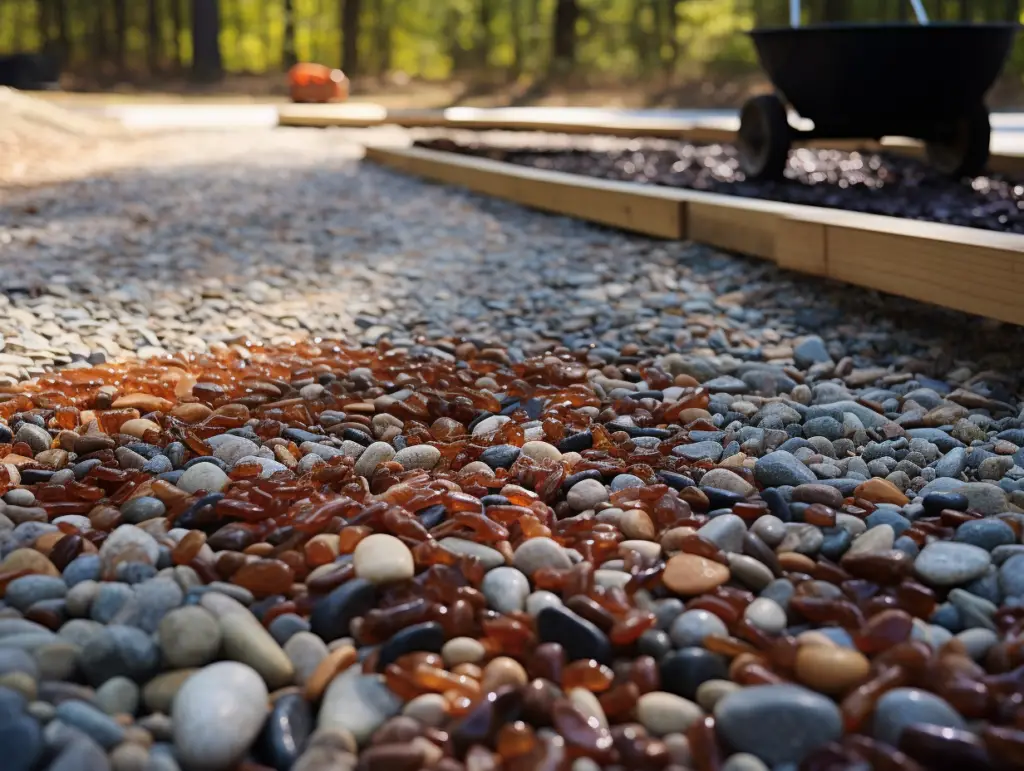
When it comes to choosing the right surface material for your patio, there are a few things to consider. Your choice will depend on the look you want to achieve, your budget, and the climate in your area. In this section, we will explore some of the most popular surface materials for patios.
Pavers
Pavers are a popular choice for patios because they come in a wide variety of shapes, sizes, and colors. They are also relatively easy to install and can be arranged in a variety of patterns. Pavers are made from concrete, clay, or natural stone, and they can be used to create a traditional or modern look. They are also durable and low-maintenance, making them a great choice for high-traffic areas.
Brick
Brick is a classic surface material for patios that has been used for centuries. It is durable, low-maintenance, and comes in a variety of colors and patterns. Brick patios are also relatively easy to install and can be arranged in a variety of patterns. They are a great choice for traditional or colonial-style homes and can add a touch of elegance to any outdoor space.
Concrete
Concrete is a versatile surface material that can be used to create a variety of looks. It can be stamped, stained, or painted to create a custom look that complements your home’s style. Concrete is also durable, low-maintenance, and relatively easy to install. It is a great choice for modern or contemporary homes and can be used to create a sleek, minimalist look.
Flagstone
Flagstone is a natural stone that is often used for patios because of its unique texture and color variations. It is a great choice for homes with a rustic or natural aesthetic and can add a touch of warmth to any outdoor space. Flagstone is also durable and low-maintenance, making it a great choice for high-traffic areas.
In summary, when choosing the right surface material for your patio, consider the look you want to achieve, your budget, and the climate in your area. Pavers, brick, concrete, and flagstone are all popular choices that can be used to create a variety of looks. Choose the material that best suits your style and needs, and enjoy your new outdoor space for years to come.
Maintaining Your Patio Base

Maintaining your patio base is crucial to ensure its longevity. A well-maintained patio base will last longer and require less maintenance in the long run. Here are some tips on how to maintain your patio base:
Regular Cleaning
Regular cleaning of your patio base is important to prevent any debris or dirt from building up. Use a broom or leaf blower to remove any leaves, dirt, or debris from the surface. Regular cleaning will also prevent weeds from growing between the gravel.
Repairing Cracks
If you notice any cracks in your patio base, it is important to repair them as soon as possible. Cracks can allow water to seep in and cause damage to the base. Use a patching compound to fill in any cracks and ensure that the surface is level.
Resealing
Resealing your patio base is important to prevent any water from seeping in and causing damage. Resealing should be done every few years, depending on the type of gravel used and the climate in your area. Consult with a professional to determine the best time to reseal your patio base.
Avoid Heavy Traffic
Avoid heavy traffic on your patio base to prevent any damage. Heavy traffic can cause the gravel to shift and become uneven. Use walkways or stepping stones to direct traffic away from the patio base.
Professional Maintenance
If you are unsure about how to maintain your patio base or if you notice any significant damage, consult with a professional. A professional can assess the damage and recommend the best course of action. It is important to address any issues as soon as possible to prevent further damage to the patio base.
In conclusion, maintaining your patio base is important to ensure its longevity and durability. Regular cleaning, repairing cracks, resealing, avoiding heavy traffic, and consulting with a professional are all important steps in maintaining a low-maintenance and long-lasting patio base.
Additional Factors to Consider
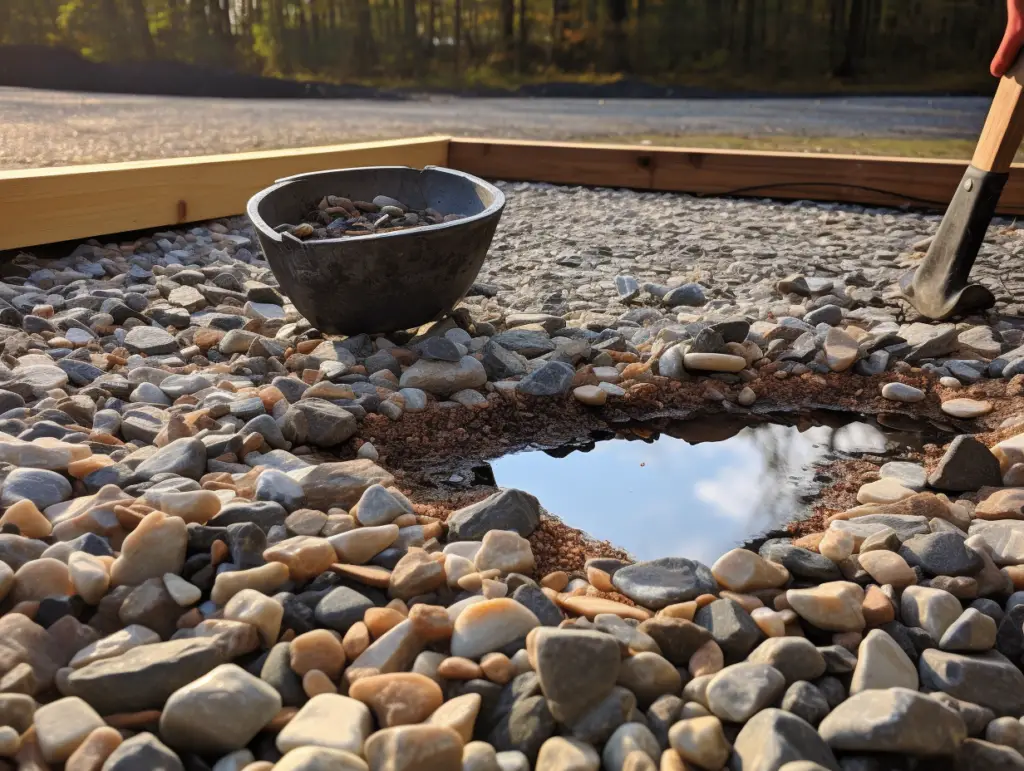
When selecting the right gravel for your patio base, there are several additional factors to consider beyond just durability and permeability. In this section, we will discuss some of the most important factors to keep in mind before making your final decision.
Weight
The weight of the gravel is an important consideration, especially if you plan to install a large patio. The weight of the gravel will impact the overall weight of the patio, which can impact the stability of the base. Make sure to choose a gravel that is lightweight enough to ensure that your patio remains stable over time.
Budget
The cost of the gravel is another important factor to consider. While some types of gravel can be expensive, there are also many affordable options available. Make sure to choose a gravel that fits within your budget while still providing the durability and stability you need.
Traffic
Consider the amount of traffic your patio will receive. If you expect a lot of foot traffic or heavy furniture, you’ll need a gravel that is strong enough to withstand the weight and wear. Look for a gravel that is specifically designed for heavy foot traffic or consider adding a layer of sand or concrete to increase stability.
Settling and Heaving
Settling and heaving are common issues with any patio base. Make sure to choose a gravel that is resistant to settling and heaving, as this can cause your patio to become uneven over time. A compacted base can help prevent settling and heaving, so make sure to take the time to properly prepare your base before laying your gravel.
Environmentally Friendly
If you’re concerned about the environmental impact of your patio, consider choosing a gravel that is environmentally friendly. Some types of gravel are made from recycled materials, which can help reduce waste and lower your carbon footprint.
Overall, choosing the right gravel for your patio base is essential to ensuring that your patio remains stable and durable over time. By considering these additional factors, you can select the right gravel for your needs and enjoy your patio for years to come.
Common Patio Base Problems and Solutions
A patio base is the foundation of any patio, and it is essential to get it right to prevent problems down the line. Here are some common patio base problems and solutions:
Cracking
One of the most common problems with patio bases is cracking. This can happen due to a variety of reasons, such as using the wrong type of gravel, improper installation, or inadequate compaction. To prevent cracking, it is important to use the right type of gravel, such as 3/4-inch crushed stone, which is durable and long-lasting. Additionally, the gravel needs to be compacted properly to ensure stability and prevent shifting.
Moisture
Moisture is another common problem with patio bases. If there is too much moisture in the soil, it can cause the base to shift and settle, leading to unevenness in the patio. To prevent this, it is important to ensure proper drainage by using a permeable gravel base that allows water to pass through to the ground below.
Clay Soil
If you have clay soil, it can be challenging to create a stable patio base. Clay soil is prone to expanding and contracting with changes in moisture levels, which can cause the base to shift and crack. To prevent this, it is important to use a permeable gravel base that allows water to drain away from the soil and prevent moisture buildup.
Loam
Loam soil is a mixture of sand, silt, and clay, and it can be an ideal base for a patio. However, it is important to ensure proper drainage by using a permeable gravel base that allows water to pass through to the ground below. Additionally, it is important to compact the gravel base properly to ensure stability and prevent shifting.
In conclusion, a stable and durable patio base is essential for a long-lasting and beautiful patio. By using the right type of gravel, ensuring proper drainage, and compacting the base properly, you can prevent common patio base problems and enjoy your patio for years to come.
Benefits of Using Gravel for Patio Base
Gravel is a popular choice for patio base material due to its durability, cost-effectiveness, and ease of installation. Here are some of the benefits of using gravel for your patio base:
Saves Time and Effort
Compared to other materials, gravel requires less digging and preparation work. It can be laid directly on top of the soil, eliminating the need for extensive excavation. This means that you can complete your patio project in less time and with less effort.
Better Drainage
Gravel is a porous material that allows water to drain through quickly. This makes it an excellent choice for areas that receive a lot of rain or have poor drainage. When used as a patio base, gravel helps prevent water from pooling and causing damage to your patio or surrounding landscaping.
Eliminates Heavy Gravel Fill
Traditional patio base materials, such as crushed stone, require a significant amount of heavy gravel fill. This can be difficult and time-consuming to transport and install. Gravel, on the other hand, is lightweight and easy to work with, making it a more convenient option.
Cost-Effective
Gravel is an affordable option for patio base material. It is readily available and can be purchased in bulk, which can help reduce the overall cost of your patio project. Additionally, because gravel is easy to install, you can save money on labor costs.
In summary, using gravel for your patio base offers several benefits, including time and cost savings, better drainage, and ease of installation. Consider using gravel for your next patio project to enjoy these advantages.
Frequently Asked Questions
What is the best material for patio base?
The best material for a patio base is a durable and long-lasting material that can prevent shifting, cracking, or washing away. A compacted base of permeable gravel is essential to provide stability and allow water to pass through to the ground below. The key to choosing the right material for your project is considering what you’ll be using it for.
What kind of gravel do you use for paver base?
For a paver base, 3/4-inch crushed stone is the best type of gravel to use. This size of gravel is large enough to provide a stable base, but small enough to easily compact. It also allows water to drain through easily.
What kind of gravel do you use for a patio?
For a patio, the best type of gravel to use is also 3/4-inch crushed stone. This will prevent the patio base from shifting, cracking, or washing away. It is important to make sure the gravel is durable and long-lasting.
What size crushed stone for pavers?
The best size of crushed stone for pavers is 3/4-inch. This size of gravel is large enough to provide a stable base, but small enough to easily compact. It also allows water to drain through easily.
Paver base alternative?
An alternative to a traditional paver base is to use plastic panels. These panels take the place of the gravel base and make the installation process easier. However, it is important to make sure the panels are installed correctly to ensure the stability of the patio.
Paver base vs gravel?
Both paver base and gravel can be used for a patio base. However, 3/4-inch crushed stone is the best type of gravel to use for a patio base. Paver base panels are an alternative to traditional gravel, but it is important to make sure they are installed correctly to ensure the stability of the patio.

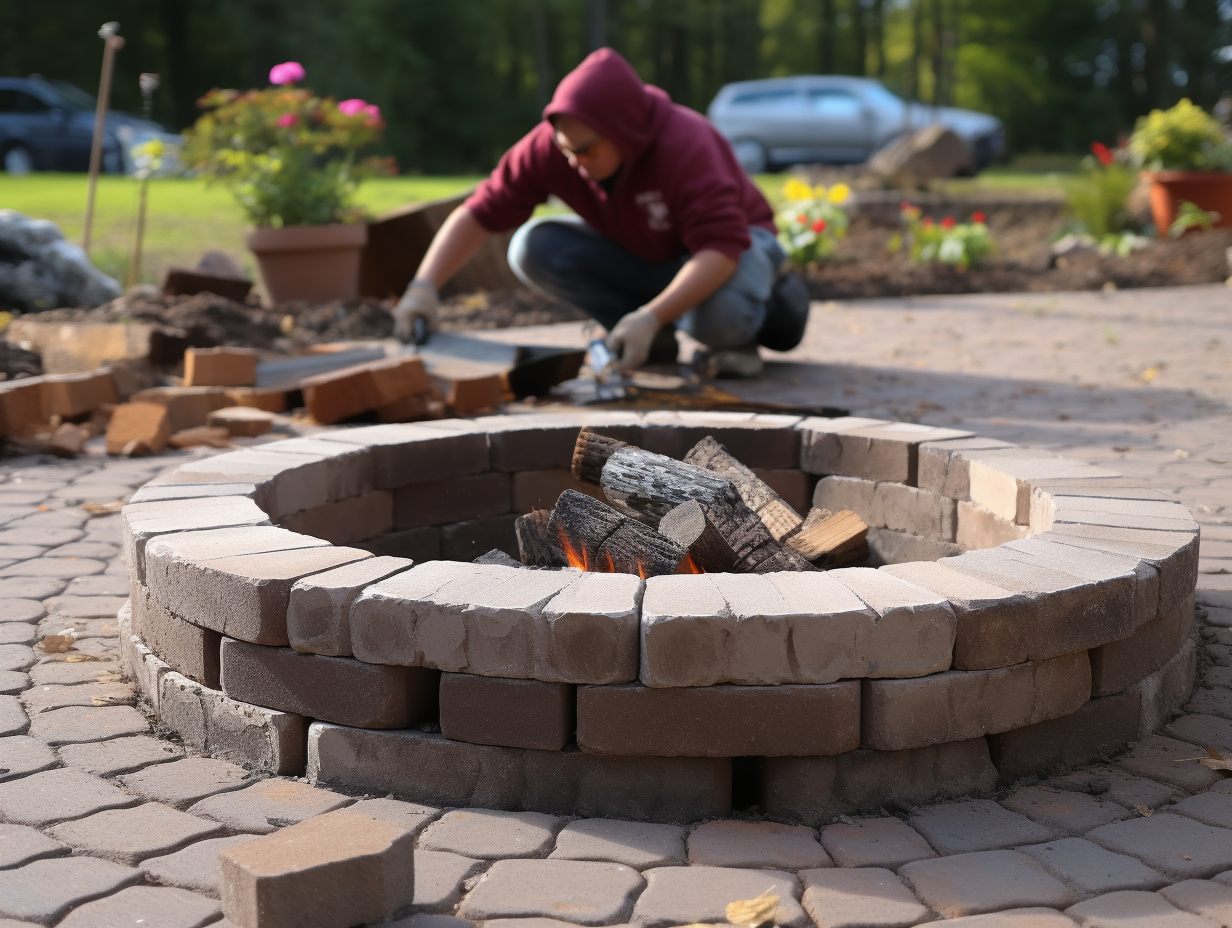

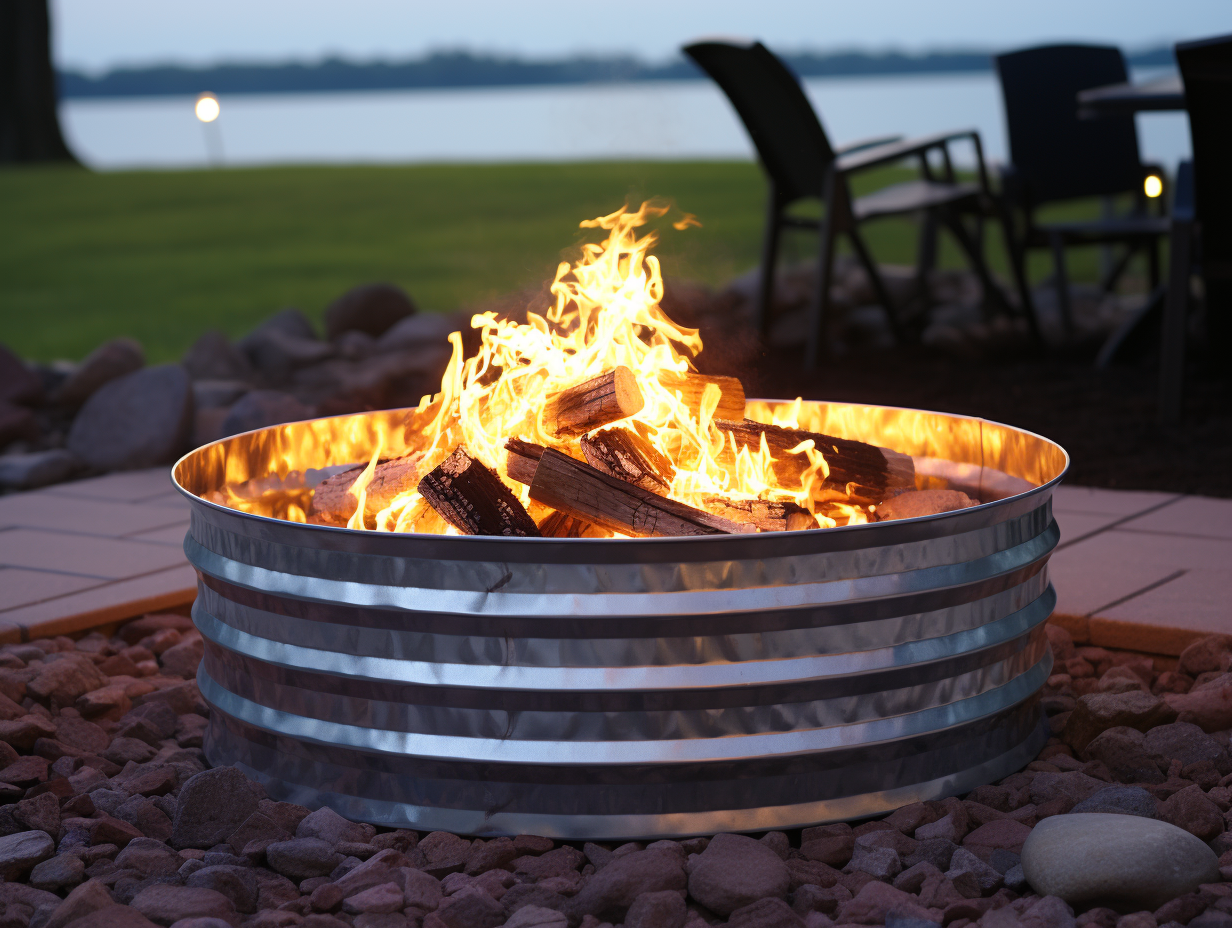

Leave a Reply